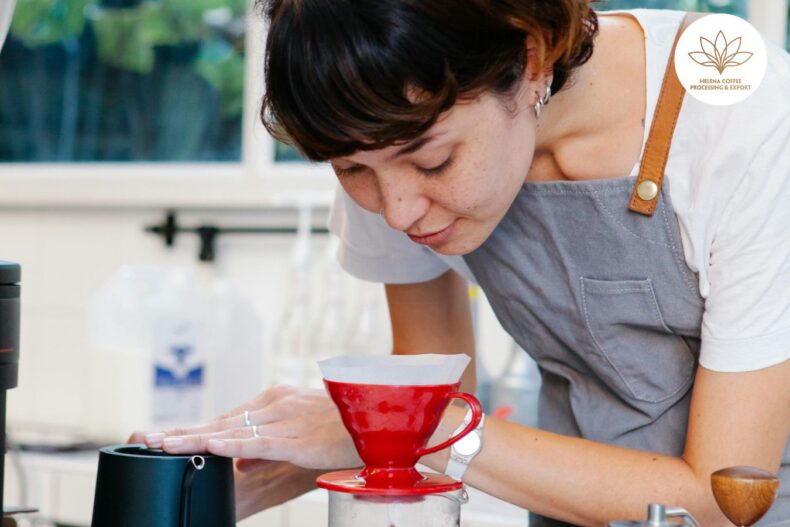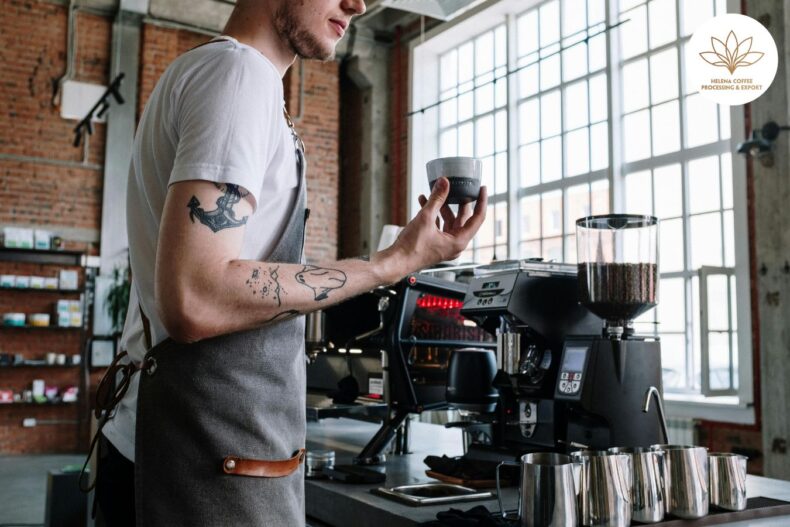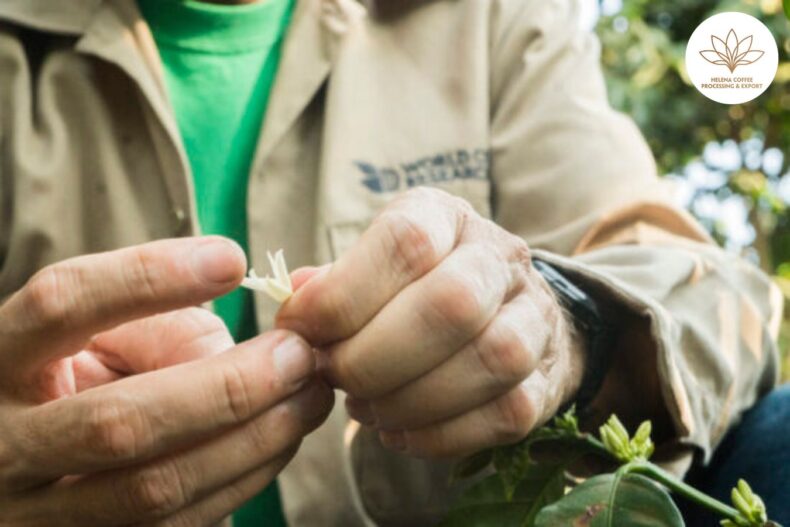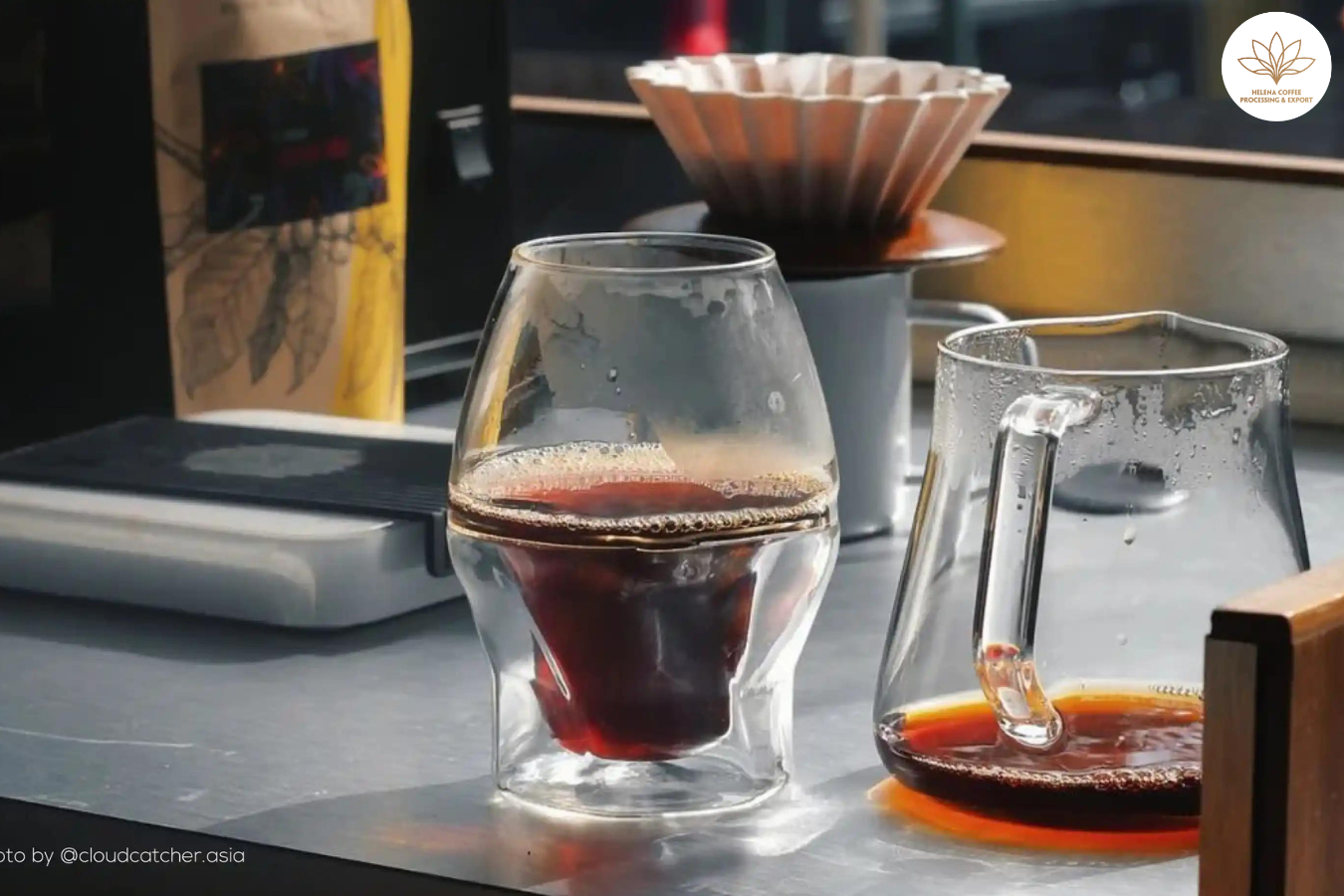
Wine glass flavour specialty coffee does change: Numerous factors influence the sensory journey of savoring specialty coffee. Beyond the more recognized elements like processing methods, roast profiles, and brewing techniques, subtler variables such as the material of the brewing apparatus and even the altitude at which one drinks coffee can shape the nuances of flavor and aroma.
A notable example is the geometry of the vessel from which the coffee is drunk. A 2018 study highlights that the form of a cup can markedly sway our sensory experience of specialty coffee, prompting some cafés and even World Barista Championship contestants to serve select coffees in cups of varied shapes to optimize the taste.
This principle has been a cornerstone in the wine industry for some time, with wine experts meticulously matching specific wines to glasses of certain contours to elevate the tasting experience.
This raises the question: could the aromatic and flavor nuances of coffee similarly benefit from being served in a wine glass?
To delve into this possibility, insights from Marek Krupa, co-founder and CFO of Kruve, and Rafael Silva, proprietor of Sicafé in El Salvador, were sought. Their expert perspectives shed more light on the subject.
Decoding the Sensory Tapestry of Coffee
Grasping the complex flavor profile of coffee starts with defining taste, aroma, and flavor:
- Taste (gustation): This is the act of sensing different flavors in the mouth and throat while consuming food or beverages. The human palate can identify five primary tastes: salty, bitter, sweet, sour, and umami.
- Aroma: The distinctive scent given off by a blend of volatile compounds that are often complex in nature.
- Flavor: The amalgamated sensory impression of both taste and aroma combined.
It’s common to attribute the nuances of a coffee’s flavor and aroma to variables like post-harvest methods, processing techniques, roast profiles, brewing methods, temperature, and water quality. And while these elements are indeed pivotal to the overall flavor profile, other factors also play a crucial role, including the shape of the vessel from which one drinks.
Marek delves into how the design of Kruve’s EQ range of glassware is intentionally crafted to amplify the experience of drinking coffee.
“The architecture of a drinking vessel profoundly influences the perception of flavor and aroma by altering the coffee’s scent and taste, along with the manner in which the coffee is consumed,” he articulates. “Furthermore, our sensory perception, emotions, and psychological state can also shape our coffee experience in subtle yet significant ways.
The Influence of Glass Design on Coffee’s Taste and Texture
In the world of specialty coffee, the norm is to serve beverages in ceramic cups or broad-rimmed, substantial glasses. When it comes to wine, professionals like sommeliers typically opt for elegant stemware that comprises a bowl, stem, and base.
Aldo Sohm, an esteemed sommelier, underscores the profound effect of a glass’s form on the sensory experience in his publication, “Wine Simple.”
Sohm elucidates in his book that a glass thoughtfully crafted for wine helps to channel the wine’s unique aromas. This guides the aromatic molecules to engage with your olfactory senses and palate in an optimal manner, thereby intensifying the flavors.
He advocates in “Wine Simple” for wine glasses that are hand-blown, sporting an ultra-fine, smooth rim. This design is intentional, ensuring that the wine makes contact with the tip of the tongue, which is sensitive to sweetness, enhancing the tasting experience.
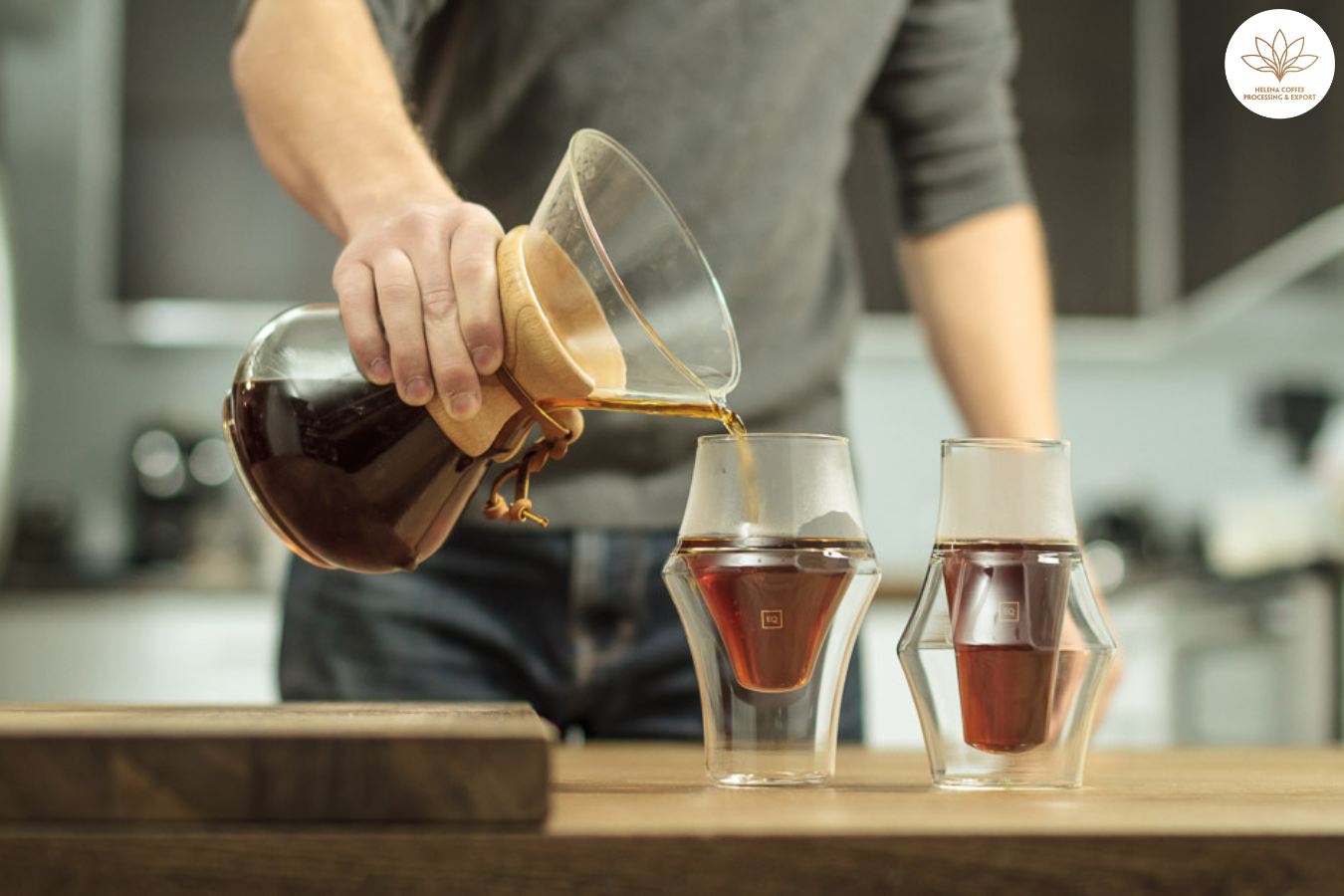
Sohm goes on to detail how even minimal variations in the glass’s contour can alter flavor perception. For example, a slight ridge at the rim could cause the wine to reach the back of the tongue, an area more attuned to bitterness, which might detract from the enjoyment.
Consequently, it’s a standard practice for wine experts to pair specific wines with glasses whose dimensions and shapes serve to magnify the wine’s bouquet and taste. For instance, glasses with more petite bowls are typically matched with white wines, and larger, broader bowls are chosen for lighter reds.
Drawing a parallel, a 2015 Japanese study utilized specialized imaging to demonstrate how the shape of a wine glass can influence the concentration and placement of aromatic vapors at its edge. These vapors, which transport aromatic compounds to the nose, play a pivotal role in defining the majority of a wine’s flavors. This research suggests that, much like wine, the sensory qualities of coffee could also be significantly affected by the shape of the glass from which it is enjoyed.
Translating Wine Glass Wisdom to Coffee
The parallels between wine and coffee extend to the influence of the vessel’s shape on the drinking experience, Marek informs me.
“Our glassware is meticulously designed with a slender, single-walled rim, allowing the coffee to cascade over the tongue akin to the way wine is tasted,” he notes. “We’ve given particular attention to ensuring sufficient space above the coffee in our filter and espresso glasses to entrap and concentrate the aromas.
“Such design is crucial for enriching the sensory journey, as trapping and directing the aromas towards the olfactory receptors heightens the perception of taste,” he continues.
Rafael, from Sicafé—a multifaceted enterprise that encompasses a farm, milling operation, and export business in El Salvador—expresses a fondness for serving filter coffee in wine glasses.
“Experiencing coffee from a wine glass is distinct and noteworthy,” he asserts. “In a wine glass, coffee’s aromatic and flavor complexities are amplified by the vessel’s shape, allowing for a more profound appreciation of the brew.”
Considering the Impact of Material on Coffee Experience
The material from which a drinking vessel is made holds significant import alongside its shape and design. Different materials possess varying degrees of heat retention and can also interact with the coffee itself, potentially affecting the flavor and aroma.
Consider the following:
- Plastic: While excellent for heat retention, plastic can both retain and impart extraneous flavors and aromas.
- Ceramic: Offers commendable heat retention and is neutral, neither absorbing nor contributing any flavors or aromas.
- Metal: Tends to lose heat quickly and can sometimes alter the taste and scent of the coffee.
Glass stands out as an inert, non-porous option that leaves the coffee’s taste and aroma unaltered. Additionally, the transparency of glass adds a visual dimension to the enjoyment of coffee, allowing drinkers to appreciate the color and clarity of their brew.
Silva highlights the superiority of wine glasses for this very reason.
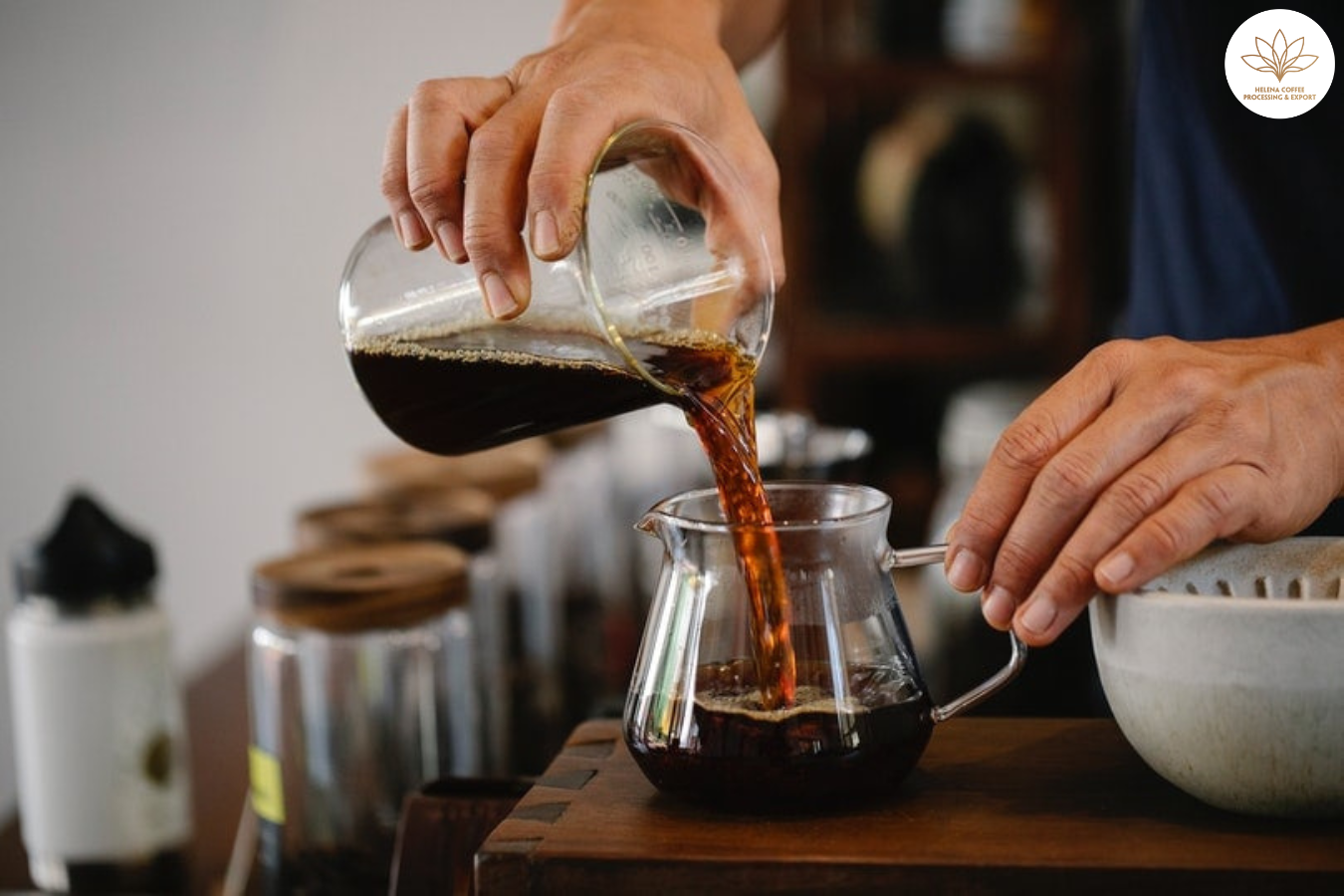
“Wine glasses enhance the drinking experience by maintaining the coffee’s temperature, keeping the flavors vibrant,” he details. “While ceramic is better at holding temperature, the typical wide opening at the top of ceramic vessels can cause aromatic compounds to dissipate swiftly.
“This can detract from the full appreciation of the coffee’s qualities, an issue you don’t encounter with wine glasses,” he concludes.
The Viability of Wine Glasses in Coffee Shops for Specialty Brews
Despite the advantages of savoring coffee from a wine glass, it’s a concept yet to be widely adopted by coffee establishments.
One prominent concern is the fragility of wine glasses; their susceptibility to breakage poses a significant risk in the bustling environment of a coffee shop. Moreover, the thermal shock from hot, freshly brewed coffee could shatter standard wine glasses that aren’t tempered. Baristas would be compelled to delay service until the coffee cools, hindering the workflow and potentially diminishing the coffee’s full flavor and aromatic profile for the consumer.
Nevertheless, Rafael believes that for specialty coffee shops aiming to offer a distinct tasting experience, wine glasses could be an intriguing option.
“Serving coffee in a wine glass could greatly enhance the sensory enjoyment for those new to specialty coffee,” he suggests. “The nuances of flavor and aroma are more readily discernible in wine glasses compared to traditional mugs or cups.”
Wine glasses might be suitably employed for serving specialty single-origin light roasts once the coffee has cooled to a safe temperature, marrying the sensory benefits with practicality.
Exploring the Potential of Varied Cup Shapes in Coffee Service
Utilizing cups of diverse shapes is a more pragmatic approach for coffee shops than employing wine glasses and is gaining traction in the industry.
Renowned Norwegian coffee roaster Tim Wendelboe has been a pioneer in this aspect, curating the coffee experience by matching specific brews with specially shaped ceramic cups. This practice is informed by findings suggesting that rounded or curved vessels can amplify the perception of aromas and sweetness.
This innovative approach to cup design has also been echoed in competitive circles, evidenced by the choices of top-tier baristas. Daniele Ricci, the 2023 World Barista Championship second-place holder, selected cups with an elevated back and a dipping front for his espresso presentation. This design was intentional, crafted to present the coffee’s aromatic profile to the judges in a heightened and accessible way.
Marek sheds light on the strategic use of cup shapes to enhance the coffee experience, drawing parallels to enological practices.
“Coffee shares a commonality with red wine in its tannin content, which can impart an astringent taste,” Marek points out. “In the wine world, to mitigate this astringency, red wine glasses are designed with a broad surface area to promote oxidation, which softens the tannins, resulting in a perceived increase in sweetness.
“In a similar vein,” he continues, “our Excite series of glasses boasts a surface area twice that of our Inspire series. This design difference means that the same coffee will exhibit a sweeter profile when served in an Excite glass.”
FAQS:
